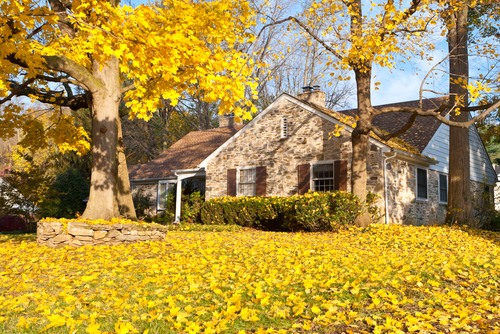We offer a wide range of services for that fresh look, or just maintenance or updates to keep your home functioning and safe. Regardless of the size of the job, we have a craftsman that can tackle it. We offer a wide range of services for that fresh look, or just maintenance or updates to keep your home functioning and safe. Regardless of the size of the job, we have a craftsman that can tackle it.

Home Improvement / October 15, 2020

With winter coming and your seasonal home projects checklist growing, preparing for winter and preventing frozen pipes is a must. Generally, the pipes in your home are isolated within the house to keep them at a household temperature. The incoming water from outside is cold in the winter and can cause a pipe to burst due to the cold contracting and the build up of pressure. But—there are many ways to prevent frozen pipes from happening, and here are our top tips on the topic.
Keeping an eye out for leaks in your home is an important way to keep track of any weaknesses in the piping system. Pipes may freeze and burst if it is continually 20 degrees Fahrenheit outside or colder. Turning on a faucet or two slightly to keep the water moving in your system helps to prevent any freezing. Pay attention to cold areas of your home such as pipes along outer walls or near a window—these have the highest risks of freezing. Make sure these areas are thoroughly heated to prevent frozen pipes.
Where there are sinks, a simple trick against frozen pipes is to keep your cabinet doors open to allow the room’s warm air to flow into the cabinet. Keep your home’s temperature up, and if you have the time before the winter season arrives, there are a number of pre-season preparations to complete.
Before winter, you need to disconnect and store your outside hose. Once the hose is removed, seal and turn off the outdoor faucet to prevent any dripping or frozen pipes. If the hose is left on, the residual water will freeze and possibly break the hose and faucet. Be sure to go through your home to check all windows and doors to find any drafts or areas where cold air may seep into the home. A simple weatherstrip can help seal a door from letting in cold drafts and shrink wrap or towels on the sills of your windows will help with those. This will prevent a drop in your home’s temperature and will avoid costly heating bills with lost heat.
With these tips, you are well on your way to preparing and maintaining your home through the winter months. If you need some help, don’t hesitate to contact a local handyman professional to make sure your projects are done right.
Contact our professionals in Hamilton to schedule an estimate with Handyman Connection today.